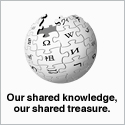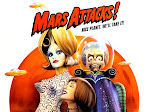
Twitter Applications
There are thousands of third-party applications built to enhance the Twitter experience -- these are just a few of the popular ones.
Twitpic: Post a photo on Twitpic, and then share the Twitpic link via Twitter.
Twhirl: Desktop software to help you manage your Twitter account, find your @replies and shorten URLs so they can be shared on Twitter.
Tipjoy: A service that lets you send small amounts of cash across Twitter, and then tweet about your donation.
Twibs: A list of businesses on Twitter with links to their Twitter accounts.
TweetDeck: Desktop software that lets people split their tweets into columns, such as @replies, direct messages, groups and keyword searches.
Twitterholic: Ranks Twitter users by number of followers.
Twitturly: Tracks which URLs are most popular on Twitter, based on how many times they've been shared by Twitter users.
Monitter: An easy way to keep tabs on multiple searches on Twitter at the same time.
Twitter Glossary
@: At reply. A public tweet directed at a fellow Twitterer, such as @Barack Obama, that shows up in their Twitter stream.
DM: Direct Message. A private message that appears in a Twitter inbox. You can only direct message people who follow you.
RT: Retweet. A tweet that you like so much that you are resending to your followers. Usually includes credit to original tweeter, such as RT @BarackObama, followed by the tweet.
Whale Icon: The iconic blue whale that pops up when Twitter is down. It appeared frequently in Twitter's first year and a half.
#: Hashtag. Used to designate a topic such as #SanDiegoFire so that people can easily search for tweets on a topic. (It is totally unnecessary, though, because a search on a keyword without the # returns the same results).
Nudge: A feature that lets you send a note to a Twitterer encouraging them to tweet more frequently. You can only nudge people who are tweeting from a mobile phone.
NOTED in the WSJ:http://online.wsj.com/article/SB123638550095558381.html?mod=djem_jiewr_swwgn_031209
Twitter is a mass text-messaging service that allows you to send short 140-character updates -- or "tweets" -- to a bunch of people at once. They are your "followers." It was designed to be read on a cellphone, though many people read it online, too.
The Daily Show" this week, host Jon Stewart reported on Twitter with a wink (or was it a twink?) at the narcissism of the personal broadcasting system: It's not about chatting with your friends -- it's about promoting yourself.
My name was available, so I set up a profile at twitter.com/JuliaAngwin. On Twitter, however, you do not exist without followers, who subscribe to receive your messages. So I set out to follow some people in the hope that they would follow me. I had to learn the crucial distinction between a "follower" and a "friend."
On Facebook, if I'm your friend, you're my friend, and we can read all about each other. Relationships on Twitter are not reciprocal: People you follow do not have to follow you or give you permission to follow them. You just sign up and start following them. It's a bit like stalking. Heather Gold, a comedian and Twitter devotee, points out that for all its flaws, the term follower "is more honest than friend."
FD: I am a Twit yet. I am not on Facebook either.





































No comments:
Post a Comment